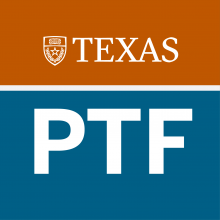
Thinking Beyond the Four Years: Assessing a Program for Coaching Career Success
Cohort: 2015
Fellow: Brad Love
The project is a longitudinal partnership with the Vick Center for Strategic Advising, College of Education faculty, Project 2021 staff, and other Longhorns to measure existing attempts to teach useful skills such as emotional intelligence so that students can make constructive decisions while at UT and then be prepared for the significant life transition that is one’s first career post-graduation. The key activities include semesterly surveys and interviews with students using Vick Center services such as in-person visits and online modules.

McCombs Student Journal
Cohort: 2015
Fellow: Sanford Leeds
The McCombs Business Journal was an effort to give students an opportunity to read and write about research. We recruited students, worked with the students to establish an organizational structure, set expectations for members, and selected student leaders. Students read a significant amount of research and wrote summaries, focusing on how that research impacts the real world.

Peer Learning Assistant Program Guidelines and Curricula
Cohort: 2015
Fellow: Cynthia LaBrake
The Peer Learning Assistant Program within the Department of Chemistry is a program developed with resources from the Provost Teaching Fellows program to enhance the educational experience of students taking general chemistry by training and employing Peer Learning Assistants (PLAs) to service large blended general chemistry courses. The large (300 –500 students) blended courses have replaced the straight lecture model with active, student centered, learning. Active learning requires coaching and in a large class it is impossible to implement with only one instructor and one tea

Drama-Based Pedagogy: Refinement and Alignment for the University Context
Cohort: 2015
Fellow: Katie Dawson
Active, embodied learning and creative teaching is needed in higher education, yet many faculty struggle with how to take up the approach. My PTF project engaged six faculty members from across UT - American Studies, Biology, Art/Design, Classics, Education, and Theatre- in a 15 week faculty learning community focused on active and creative teaching strategies. Through the project, faculty members explored active and creative teaching methods in monthly meetings, and re-designed at least two lectures to use active/creative teaching approaches.

Animals, Sustainability, and the Environment: A Service Learning Model for the Humanities
Cohort: 2015
Fellow: Janet Davis
This project has provided my students with an experience in hands-on service learning, thus fostering a synergistic understanding of historical analysis and community engagement. “Animals and American Culture: Select Historical Perspectives” is an interdisciplinary upper-division undergraduate seminar that attracts a diverse student body in the liberal arts and natural sciences. During the first week of class, students are required to contact one of two local organizations--or, with my permission, an organization of their own choosing.

Clinical Advancement in Simulated Environments
Cohort: 2015
Fellow: Courtney Byrd
Among the communication disorders considered to be fundamental to the scope of practice for speech-language pathologists, stuttering or what is also commonly referred to as a fluency disorder has historically been and continues to be the disorder for which most speech-language pathologists report minimal to no clinical or academic exposure and/or competency.

Dynamic Practice and Assessment System for Statistics Course(s)
Cohort: 2015
Fellow: Tasha Beretvas
Mastery of the use and interpretation of statistical techniques requires a lot of practice. Similarly, statistics is only mastered with a lot of practice. However, instructors unfortunately only have a finite amount of time available to create an endless supply of new problems and associated answers. They also do not have an endless amount of time to provide hints to help students find their own way past their misconceptions. In addition, it is very difficult for students to receive immediate feedback to understand what they are doing and what they need to do.

Use of Standard Patients in an Observed Structured Clinical Exam
Cohort: 2015
Fellow: Renee Acosta
The College of Pharmacy curriculum is designed for the students to begin with a foundation of knowledge that they then practice in a laboratory setting followed by application in a real world setting. This project will provide students in the Nonprescription Pharmacotherapeutics/Self-Care sequence opportunity to gain constructive feedback and more consistent practice of their skills prior to moving on to the Community Pharmacy - Introductory Pharmacy Practice Experience in their third year and Advanced Pharmacy Practice Experience in their fourth-year.

Data Drive Course Design: Differentiation of Chemistry Concept Retention between Standard and Hybrid Courses
Cohort: 2014
Fellow: David Vanden Bout
To date, we have had a number of sections of CH301/CH302 that have utilized the hybrid framework to varying extents. In this new hybrid model, the in-class learning is supported by a significant set of online resources to support independent learning outside of the classroom. This approach marries the flexibility and customized nature of web based learning modules to deliver the factual knowledge and procedural knowledge with relevant, engaging classroom based instruction that will serve to motivationally engage the students.

COLA’s Teaching Mentor Program
Cohort: 2014
Fellow: Sean Theriault
New faculty hires have many resources at their disposal to improve their teaching. In fact, so many resources exist that it can be paralyzing. What I propose is not an investment in offices or institutions, but rather in people. By virtue of completing a dissertation, most Ph.D.s are proficient at research. Regrettably, the correlation between research and teaching is not perfect; though a perusal of the teachers in the Academy of Distinguished Teachers shows that a strong correlation very well may exist. Teaching, regrettably, usually only becomes a problem when it is a problem.

